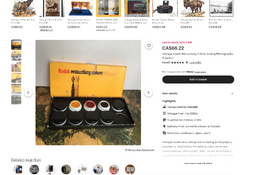eli griggs
Member
I have all kinds of art pencils, and wouldn't dream of using them on a glossy print. It sits on the surface, whereas a real retouching dye sinks into the emulsion and doesn't betray itself with a mismatched sheen if properly mixed. And soft pencil might transfer to the back of another matted print stacked in a portfolio box.
Spot Tone easily washes out if you just put the print back into a tray of water or into the print washer for a little while.
Once in awhile I will touch up a tiny white spot requiring deep black with a very fine point Sharpie pen. That would be a sheen mismatch too if it weren't so small an area as to not attract attention.
I've found black Sharpie pens leave a purplish hue that should be accounted for on important prints, no matter how small.
.
Cheers,
Eli












